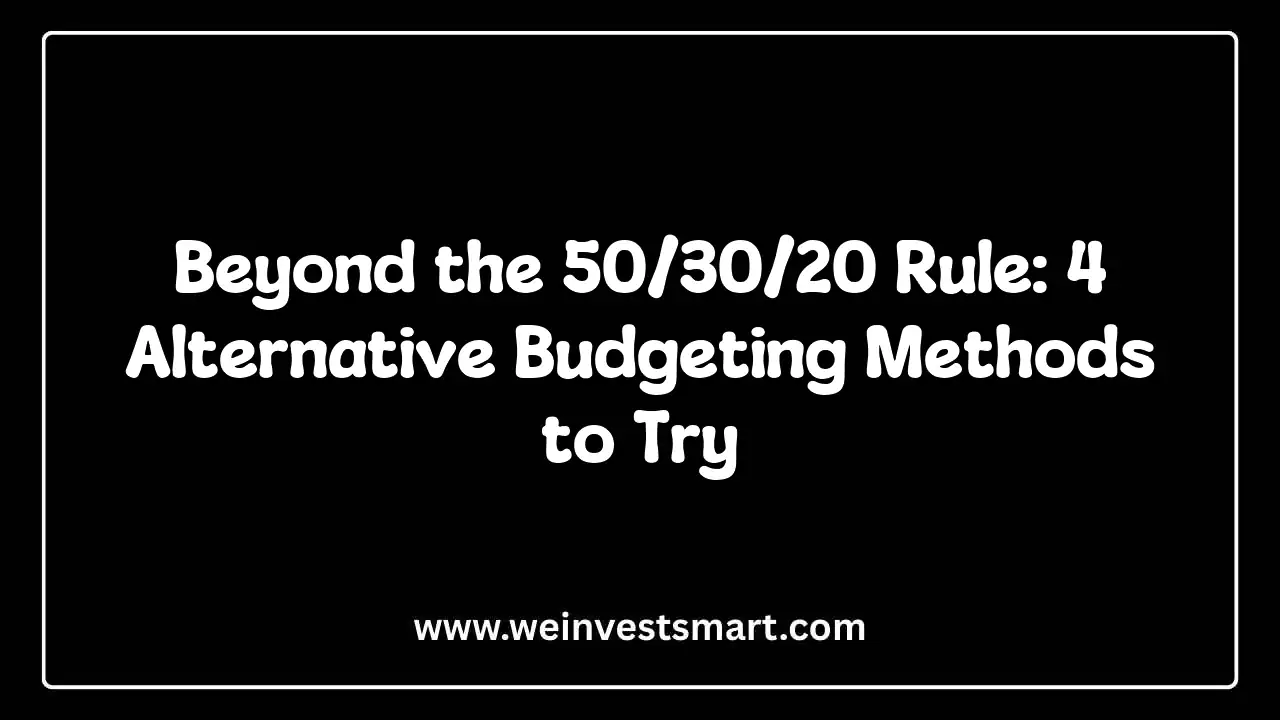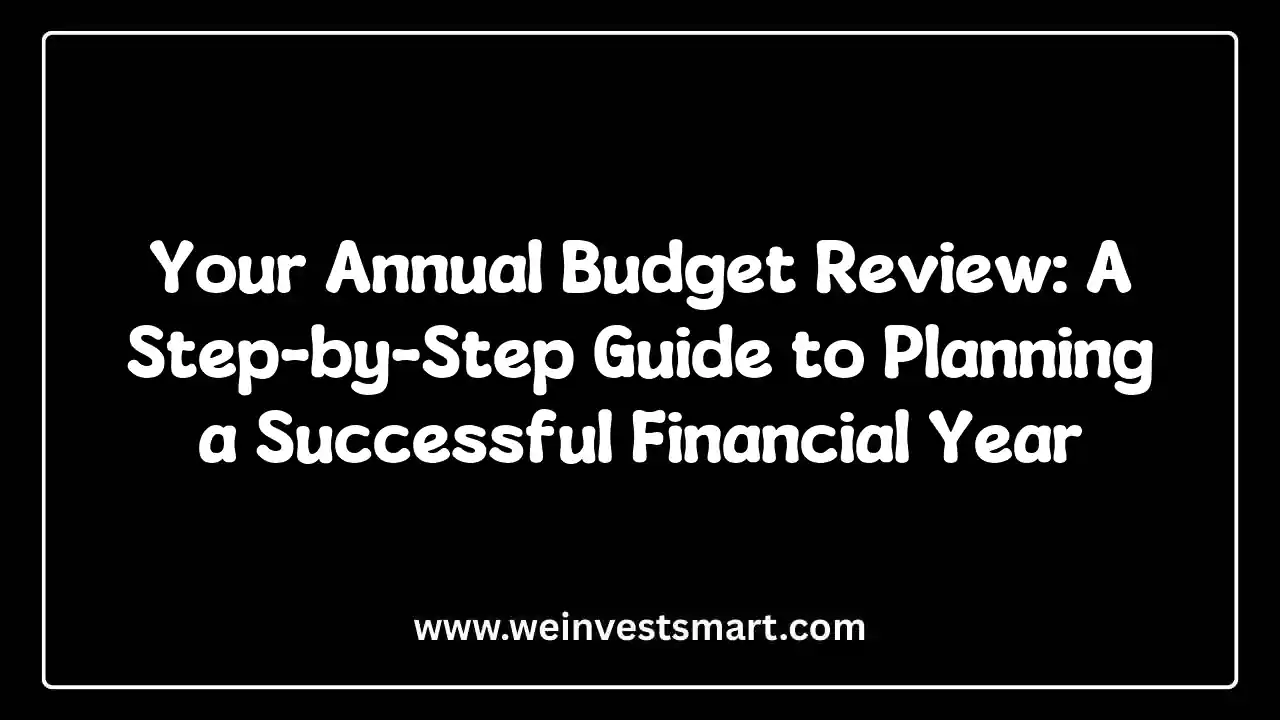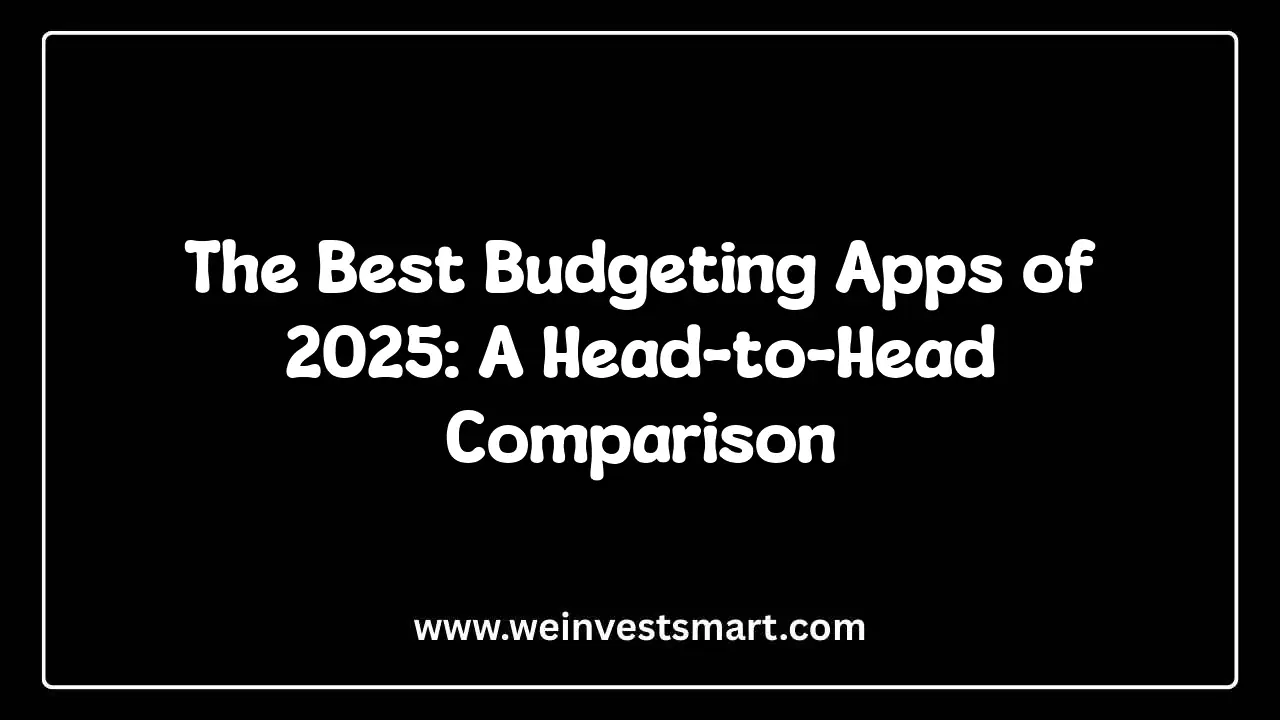· WeInvestSmart Team · budgeting · 11 min read
The 8 Biggest Budgeting Categories That Are Draining Your Wallet
Ever wonder where your money really goes? This deep-dive spending audit reveals the eight most common budget-killers—from sneaky subscriptions to impulse buys—and gives you actionable tips to plug the leaks and take back control.
Most people have a fundamentally flawed understanding of their own finances. We meticulously track our income down to the last cent, but our spending? That’s a mysterious, foggy landscape where money just seems to… disappear. We tell ourselves we’re broke, that we don’t earn enough, that we’ll start saving next month. But here’s the uncomfortable truth: for many of us, the problem isn’t how much we earn; it’s that we have absolutely no idea where our money is actually going. We are victims of a thousand tiny financial papercuts that are bleeding our budgets dry.
Going straight to the point, your wallet isn’t being drained by one single, massive expense. It’s being systematically emptied by a handful of sneaky, often invisible, spending categories that have become normalized in modern life. We’ve all heard the advice to “make a budget,” but that’s like telling someone to build a house without giving them a blueprint. To understand this, we need to go to the heart of the problem, which most people don’t know: you cannot control what you do not measure.
Here’s where things get interesting. Conducting a “spending audit”—a forensic examination of your bank and credit card statements—is one of the most terrifying and empowering things you can do for your financial health. It replaces vague anxiety with hard data, revealing the often-shocking reality of your habits. And this is just a very long way of saying that it’s time to turn on the lights and see exactly which monsters have been hiding in your financial closet.
1. The Food Trifecta: Groceries, Dining Out, and Delivery
Food is a classic example of a budget category that expands to consume all available funds. It’s not one leak; it’s three. In 2023, for the first time, Americans spent more on food away from home (55.7%) than on food at home. This cultural shift toward convenience is devastating for our wallets.
- Dining Out & Takeout: The occasional restaurant meal is a wonderful treat. A three-times-a-week habit is a financial emergency. A $50 dinner out might not seem like much, but if you do it twice a week, that’s over $400 a month, or nearly $5,000 a year, spent on convenience.
- Food Delivery Apps: These are even more insidious. The convenience of services like DoorDash and Uber Eats comes at a premium, with delivery fees, service charges, and driver tips easily adding 30-40% to your bill. That $20 burrito can quickly become a $30 expense without you even blinking.
- The Daily Coffee: That “harmless” $5 latte is anything but. A daily habit can easily cost over $1,000 a year. It’s a classic lifestyle inflation item that feels small in the moment but accumulates into a significant drain over time.
How to Plug the Leak:
- The “Cook Four, Eat Out One” Rule: For every five dinners in a week, commit to cooking four at home. This simple rule creates a realistic structure that allows for treats without destroying your budget.
- Delete Delivery Apps (Temporarily): Do a 30-day detox. Removing the apps from your phone creates just enough friction to force you to reconsider whether you truly need that delivery.
- Become a Home Barista: Invest $50 in a quality coffee maker, a French press, or an Aeropress. The upfront cost will pay for itself in a matter of weeks.
You may also be interested in: How to Conduct a “No-Spend Challenge”: The Ultimate Financial Reset
2. Subscription Creep: The Silent Budget Killer
We are living in a subscription economy, and it’s quietly draining our bank accounts. From streaming services and gym memberships to meal kits and software, these small, recurring charges are designed to be forgotten. The funny thing is that most of us are paying for services we don’t even use. A recent survey found that 85.7% of people have at least one paid subscription going unused each month. The average person is wasting $32.84 per month—or nearly $400 per year—on these forgotten charges.
Going straight to the point, subscriptions thrive on autopilot. You sign up for a free trial, forget to cancel, and suddenly you’ve been paying $14.99 a month for six months for a service you used once. These aren’t just Netflix and Spotify; they include everything from Amazon Prime and fitness apps to cloud storage and premium app features. Each one seems small, but together they form a significant, consistent drain on your resources.
How to Plug the Leak:
- Conduct a Subscription Audit: Print out your last three months of bank and credit card statements. Go through them line by line with a highlighter and mark every single recurring charge.
- The “Keep, Pause, or Cancel” Method: For each subscription, ask yourself: “Have I used this in the last 30 days?” If the answer is no, your choices are to pause it (if possible) or cancel it immediately. Be ruthless.
- Use a Subscription Manager: Services like Rocket Money or Trim can help you identify and cancel unwanted subscriptions automatically.
You may also be interested in: How to Create a “Values-Based” Budget and Spend Guilt-Free
3. Transportation: Your Car is Costing More Than You Think
For most people, transportation is the second-largest expense after housing, eating up around 18 cents of every dollar earned. The problem is, we dramatically underestimate the true cost of car ownership. We think about the monthly payment and the price of gas, but we conveniently forget about insurance, maintenance, repairs, registration, and depreciation. The American Automobile Association (AAA) calculates that even a small sedan costs its owner over $10,000 a year to operate.
Here’s where things get interesting. We accept these costs because we see our cars as a symbol of freedom and a necessity. But what we’re really paying for is a convenience that, in many cases, has cheaper alternatives. We drive to work out of habit, even if public transport is available. We take the car for a one-mile trip to the store without a second thought. This reliance on a personal vehicle is a massive, and often unexamined, financial burden.
How to Plug the Leak:
- Calculate Your “Cost Per Mile”: For one month, track your total car expenses (gas, insurance, maintenance) and divide it by the number of miles you drove. The result will likely shock you and make you think twice about unnecessary trips.
- The “One Car-Free Day” Challenge: Pick one day a week to leave the car at home. Use public transport, carpool, bike, or walk. This forces you to explore alternatives and breaks the cycle of habitual driving.
- Shop Your Car Insurance Annually: Insurance rates can vary dramatically between providers. Set a calendar reminder to shop for new quotes every single year. A few phone calls could save you hundreds of dollars.
You may also be interested in: How to Create a Budget That Works With an Irregular or Variable Income
4. Housing: The “House Poor” Epidemic
Your housing cost is the foundation of your entire budget. If it’s too high, no amount of coupon-clipping or coffee-brewing at home will save you. Financial experts have long recommended that you spend no more than 30% of your gross income on housing. Yet, millions of people are “house poor,” meaning they spend so much on their rent or mortgage that they have little left over for savings or other essential expenses.
The pressure to live in a certain neighborhood, to have a spare bedroom, or to buy a bigger house than you truly need can lead to disastrous financial decisions. This sounds like a trade-off between location and financial health, but it’s actually a direct choice. Choosing a more affordable living situation, even if it means downsizing or moving to a less trendy area, can free up hundreds or even thousands of dollars each month.
How to Plug the Leak:
- Downsize or Relocate: This is the most dramatic but most effective solution. Moving to a smaller apartment or a less expensive neighborhood can permanently lower your single biggest expense.
- Get a Roommate: Renting out a spare room can instantly cut your housing costs and provide a significant income boost.
- House Hacking: This involves buying a multi-unit property, living in one unit, and renting out the others. The rental income can offset or even completely cover your mortgage, allowing you to live for free.
You may also be interested in: Beyond the 50/30/20 Rule: 4 Alternative Budgeting Methods to Try
5. Impulse Online Shopping: The Dopamine Trap
The modern world is a minefield for impulse shoppers. One-click ordering, targeted social media ads, and “buy now, pay later” schemes are all designed to bypass your rational brain and trigger an emotional purchase. And it’s working. The average American spends hundreds of dollars on impulse buys every month. In 2022, that figure was $314 per month, translating to over $3,700 a year in unplanned spending.
Going straight to the point, every time you click “buy now” on an item you didn’t plan to purchase, you get a small dopamine hit. This creates a powerful psychological reward loop that can be as addictive as any other habit. The convenience of online shopping has removed all friction from the buying process, making it dangerously easy to spend money you don’t have on things you don’t need. A study even found that drinking caffeine before shopping can increase impulse spending by 50%.
How to Plug the Leak:
- Implement a 24-Hour Rule: If you see something you want to buy that isn’t on your list, force yourself to wait 24 hours. This cooling-off period allows the emotional urge to fade, and you’ll often realize you don’t actually want the item.
- Create Friction: Unsubscribe from all retailer emails. Delete shopping apps from your phone. Remove your saved credit card information from your browser and online accounts. Make it harder to spend money.
- Use a Wish List: Instead of buying an item immediately, add it to a dedicated wish list. Review the list once a month. This transforms impulse desires into planned, intentional purchases.
You may also be interested in: The Best Budgeting Apps of 2025: A Head-to-Head Comparison
The Bottom Line: From Audit to Action
So, what do we do? We stop sleepwalking. A spending audit is the financial equivalent of turning on the lights in a dark room. It can be scary, and you might not like everything you see. But you can’t fix what you can’t see. By identifying these major budget drains, you move from a position of passive victimhood to one of active control.
And this is just a very long way of saying that your income doesn’t have to be the limiting factor in your financial life. The money is often already there; it’s just being misallocated to things you don’t truly value. You get the gist: conduct the audit, identify the leaks, and start making conscious choices. This is the first, most critical step to taking back control of your wallet and, by extension, your future.
This article is for educational purposes only and should not be considered personalized financial advice. Consider consulting with a financial advisor for guidance specific to your situation.
Budgeting Categories FAQ
What are the biggest budget-killers?
The most common budget-killers are typically food (especially dining out and delivery), housing costs that are too high for your income, transportation expenses, unused or forgotten subscriptions, impulse online shopping, high-interest debt payments, personal care services, and entertainment.
How can I find out where my money is going?
The best way to find out where your money is going is to conduct a spending audit. For one month, track every single dollar you spend. Use a budgeting app, a spreadsheet, or a simple notebook. This process will reveal the uncomfortable truths about your spending habits and highlight the categories where you can save the most.
How can I reduce my food spending?
To reduce food spending, prioritize cooking at home. Plan your meals for the week, create a detailed grocery list and stick to it, and buy generic brands. Challenge yourself to limit dining out and food delivery to a specific number of times per month. This single change can often save hundreds of dollars.
Are subscriptions a major expense?
Yes, subscriptions can be a significant hidden expense. The average person has multiple subscriptions, many of which go unused. Auditing your bank statements for all recurring charges and canceling those you don’t use regularly is a quick and easy way to free up cash in your budget.
What’s the best way to stop impulse shopping?
To stop impulse shopping, create friction. Unsubscribe from marketing emails, delete shopping apps from your phone, and remove saved credit card information from online stores. Implement a 24-hour waiting period before making any non-essential purchase. This pause gives you time to decide if you truly need the item.



